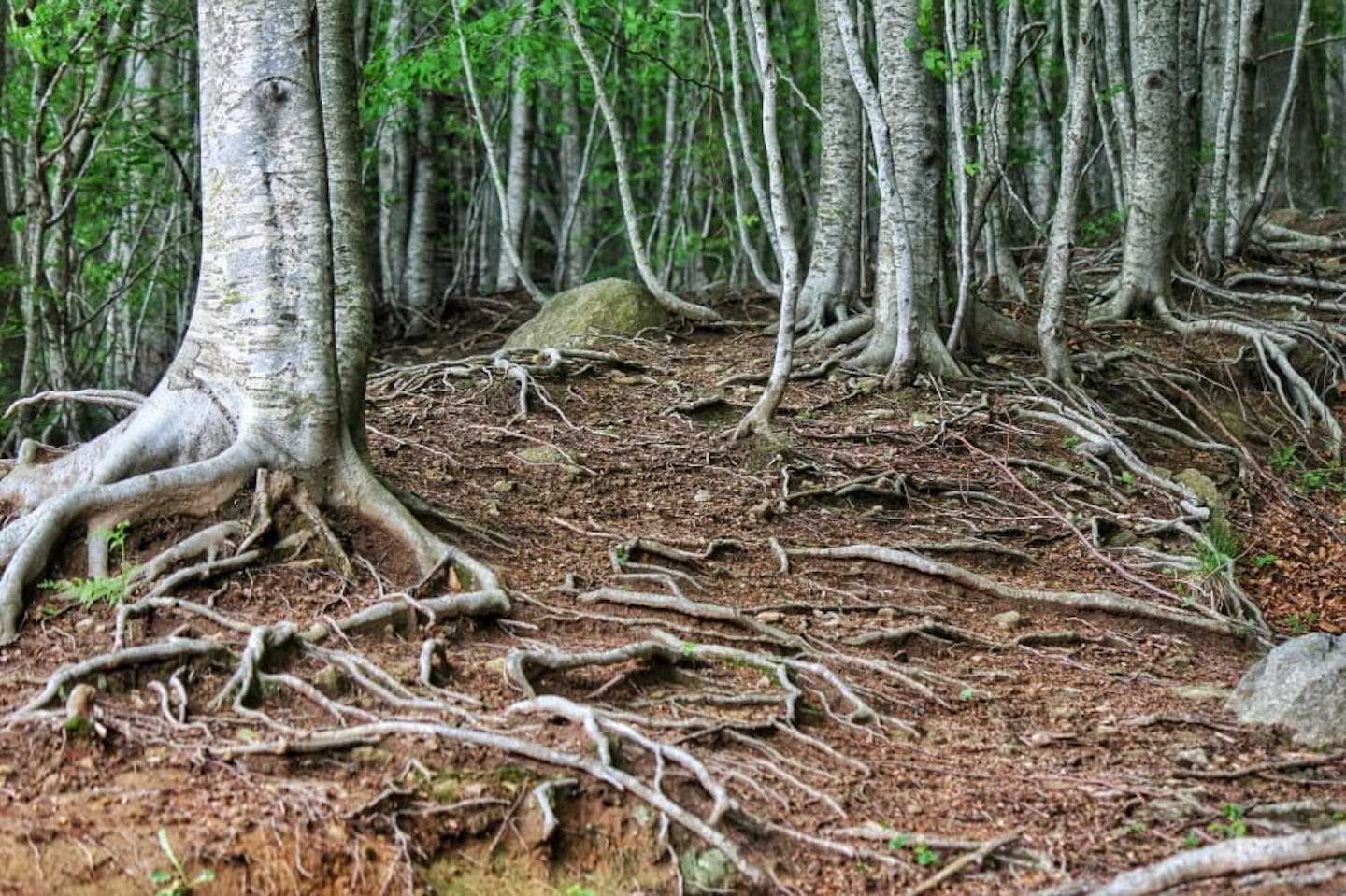Tapping into underground forests
- Regenerative Agriculture
- Ecosystem Restoration
- Agroecology
- Farm Afforestation
- Soil Management
- Southern Eurasia Realm
Forests are living examples of how everything on Earth is connected. From the tiniest insect to the largest forest, and everything in between, each living being and natural system contributes to the health of another. When an ecosystem is in balance, all the animals and plants and communities that depend on each other can thrive. But when trees are cut down and the earth is burned for agriculture or development, the soil loses fertility and its ability to sustain life. Ecosystems then begin to collapse, leading to erosion, destructive winds, drought, flooding, and a loss of biodiversity, all of which create suffering for the world’s poorest people.
However, Earth’s power doesn’t just exist above ground. Just beneath the surface of what may appears to be a barren landscape is an immense underground forest with all the potential to regenerate and sustain a booming ecosystem.
In most drought-prone areas of the tropical world exist whole “underground forests” of tree roots that have taken hold in the continuous, generations-long farming cycle: trees and plants cut, burned, or covered with soil in order to plant new crops. Despite the repeated above-ground destruction, these almost invisible underground forests have stayed alive. All they need is a chance to grow.
Enter Farmer-Managed Natural Regeneration (FMNR), a system developed by Tony Rinaudo, an agronomist who’d spent years trying to plant trees in Niger using conventional methods. Upon discovering not just living, but thriving, roots underground, he was able to nurture them into a full forest. Now, in partnership with World Vision/Australia and dozens of other organizations, about six million previously barren hectares of Niger have been reforested.
FMNR teaches communities that caring for existing trees — even the tiniest sprouts — through simple methods such a pruning can maximize growth while delivering nutrients back into the earth, promoting optimal growing conditions for annual crops. Perhaps the least expensive and most successful method for bringing the power of forests back, FMNR has now extended across the world. In the Sahel region of Africa, FMNR has helped to increase food security, resilience and climate change adaptation in poor farming communities.
Farmers who regenerate soils rather than merely planting new crops on top of old ones have a more fertile foundation from which to grow new plants and sustain farmed animals. They’re able to increase the amount and nutritional value of food available to their families, increase their biomass production and drought-resistance, increase their incomes, and improve the biodiversity and overall sustainability of their farm systems. At the same time, they will be sequestering more carbon in the healthier soil as well as in the newly flourishing trees.
But the benefits extend far beyond individual farms. As habitats begin to regenerate, bigger and healthier crops and better nourished animals and their products can be sold for more income, as can byproducts such as hay, feed, firewood, and timber. Businesses like honey production and even ecotourism become possible, leading to further income and sustenance for entire communities.

.png?auto=compress%2Cformat&w=200)

